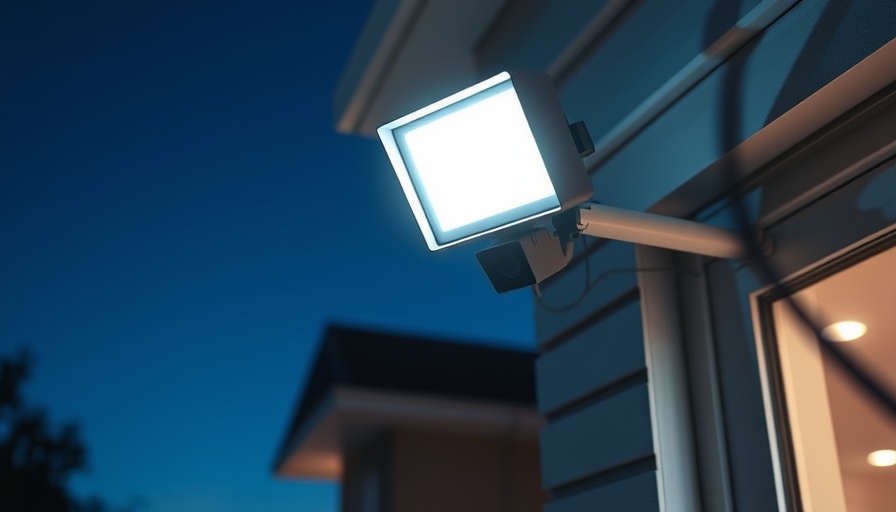
Why Smart Home Clutter is a Growing Concern
In today’s tech-savvy world, smart home devices are more prevalent than ever. As homeowners and businesses increasingly integrate technologies like smart locks, video doorbells, thermostats, and security cameras into their daily routines, the corresponding influx of mobile apps to manage these devices can become overwhelming. Users often find themselves grappling with multiple applications, leading to frustration and inefficiencies. This article dives into effective strategies to declutter your phone by managing those ever-growing smart home apps, focusing on approaches that simplify organization and enhance user experience.
Understanding the Role of the Matter Standard
As the industry continues to evolve, one promising solution to the app clutter dilemma is the adoption of Matter, a universal smart home standard developed by leading technology giants including Amazon, Google, and Apple. Matter aims to unify smart home devices under a single platform, allowing consumers to control various devices from one interface. Despite its slow rollout, opting for smart home gadgets that support Matter can significantly reduce the need for multiple apps. Look for the Matter logo on new devices to ensure compatibility.
Streamlining Control with Third-Party Automation Apps
In addition to adopting Matter-supported devices, leveraging third-party automation apps can help consolidate control over your smart devices. Platforms such as Home Assistant and IFTTT (If This, Then That) enable users to manage multiple devices through a singular interface. While Home Assistant may come with a steeper learning curve, it offers advanced automation capabilities, allowing for complex interactions between devices. Meanwhile, IFTTT allows for simple rule-based controls that can make your smart home management more efficient. Investing time in setting these up can lead to a seamless smart home experience.
Practical Insights for Simplifying Your Smart Home
1. **Assess Your Existing Apps**: Take inventory of the smart home applications currently on your phone. Identify which devices truly require a dedicated app and which can be integrated using Matter or an automation platform. This assessment will help you streamline your digital environment.
2. **Set Up Scenes and Routines**: Many automation platforms allow users to create scenes or routines that trigger multiple devices at once, further reducing the need to switch between apps.
3. **Regular Maintenance**: Like decluttering your home, maintaining your phone’s app landscape requires regular attention. Periodically review your installed apps, removing those that are no longer in use or those that duplicate functionalities.
Future Trends in Smart Home Technology
The rise of Matter signifies a shift toward greater interoperability in smart home technology, promising a future where device management becomes effortless. As more devices become Matter compliant, the need for numerous apps is expected to diminish. Homeowners and businesses can look forward to enhanced compatibility, allowing for a more integrated and user-friendly smart home experience. Additionally, with advancements in artificial intelligence and machine learning, future smart home systems may offer even greater automation capabilities, further reducing the need for app juggling.
Emotional Benefits of a Decluttered Digital Space
Managing numerous smart home apps can lead to unnecessary stress. A decluttered phone can greatly enhance mental clarity, making it easier for users to focus on what truly matters in their daily lives. As seen in various studies, individuals often report a sense of relief and increased productivity when their digital environments are organized. Simplifying your smart home experience not only enhances functionality but also contributes to a more enjoyable and less hectic living environment.
Making Informed Decisions for Your Smart Home
Ultimately, the key to a streamlined smart home experience lies in making informed choices about the devices you purchase and implement. Research potential new devices based on their compatibility with current standards like Matter, and consider the long-term benefits of automation and integration. This proactive approach will keep your smart home manageable and efficient, paving the way for more time spent enjoying technology rather than wrestling with it.
The movement towards smart homes doesn’t need to come at the expense of ease and organization. By adopting the strategies outlined above, you'll be on your way to a more user-friendly experience, allowing you to better enjoy the conveniences that modern technology has to offer.
 Add Row
Add Row  Add
Add 



Write A Comment